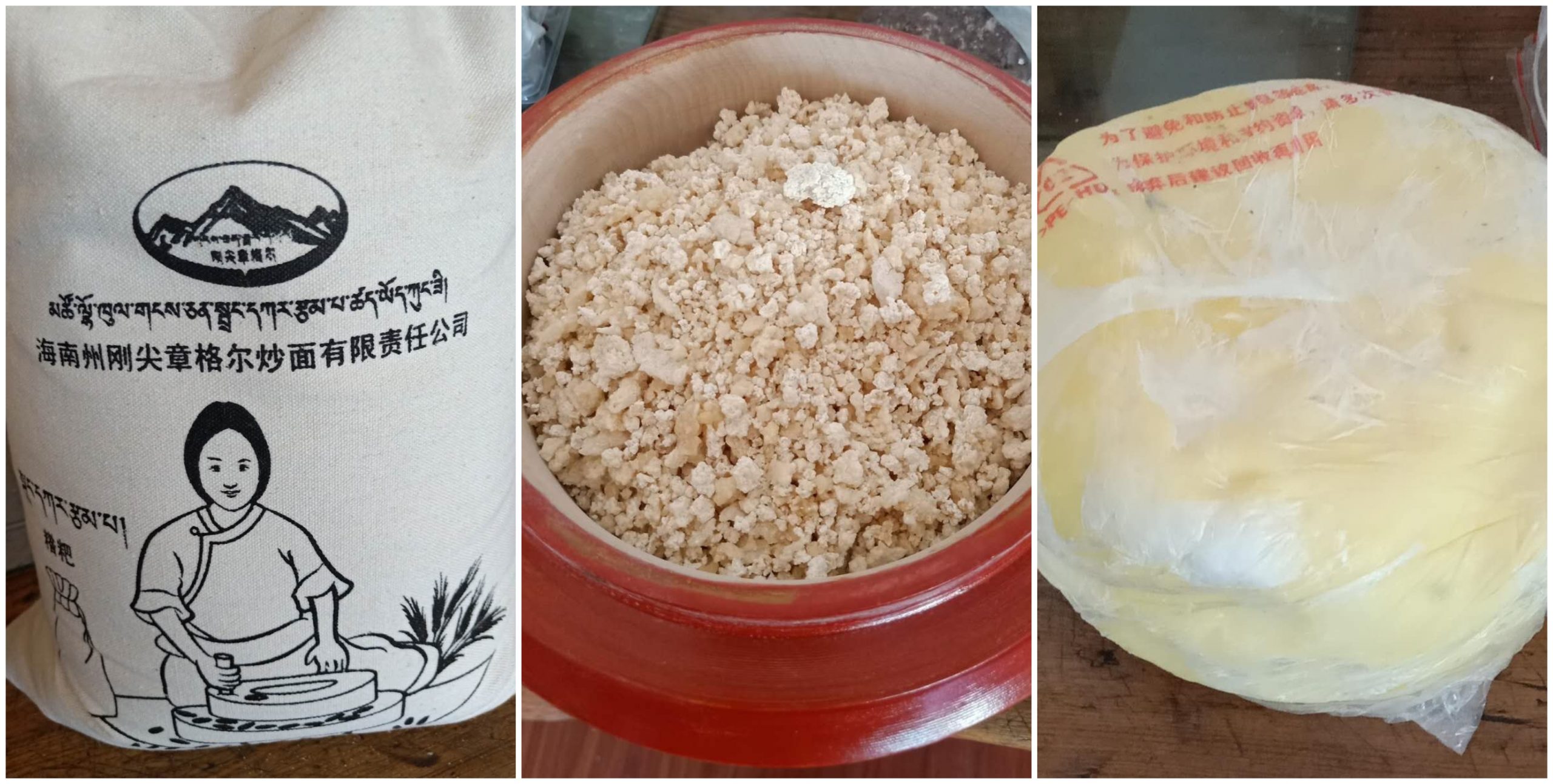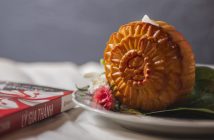Food can be a powerful way to link ourselves back to our culture and family and the dishes that we love the most usually aren’t the fancy restaurant dishes. They are the ones we grew up with, which are steeped in childhood nostalgia. For me, that one unforgettable dish is tsampa.
My grandfather is from Tibet, and I grew up being exposed to certain elements of Tibetan culture, including its religion, history, and traditions. I even have a Tibetan name “德赞穹培” which more-or-less means “amass all blessings and be protected by Buddha’s glory”. Being the foodie that I am, I became especially intrigued in Tibetan cuisine, which is vastly different from the food you find elsewhere in China. Tibet’s distinct living environments and nomadic background results in a meat- and dairy-based diet, while barley is the dominant grain.

My grandfather in his hometown
On one occasion when I returned to my hometown, a Tibetan village in Qinghai Province, my grandfather and a few villagers held a celebratory lunch party before our departure. An entire lamb was slaughtered fresh in our yard prior to lunch, and a few hours later, a feast of lamb intestines, blood sausages, meat, cheese, potatoes, freshly picked greens, and barley wine were laid out on the lunch table. To wash down the heavy meal, there was free-flowing hot milk tea made with freshly squeezed cow or yak milk and dark, bold puer tea (普洱茶 pǔ’ěr chá). Speaking of Tibetan drinks, my grandfather often made us butter tea (酥油茶 sūyóuchá), made from yak butter and puer tea. Butter tea can be made salty or sweet, and although unorthodox, it is a very popular drink that provides warmth and energy in the brisk and barren Tibetan climate.

Roast barley flour (left), Tibetan cheese: hard and chewy texture (middle), heartier and drier yak butter (right)
Another dish that I hold very dear to my heart is tsampa (糌粑 zān bā) a typical Tibetan dish that is made by mixing roasted barley flour (青稞粉 qīngkē fěn) with leftover butter tea in a bowl. The mixture is then manually formed into a pasty dough, formed into a shape, and eaten without baking. You can always find roasted barley flour, yak butter, and puer tea in my grandfather’s house, so when I stay with him, he often offers to make me tsampa. Sometimes he sweetens the mixture with honey and sugar to satisfy my and my sister’s picky palates or adds texture with dry hard Tibetan cheese. The nuttiness from the barley and fat from the butter tea pair surprisingly well, and the calorie and nutrient-dense nature of tsampa give you energy for the entire day. Wash the tsampa down with a bowl of puer tea, and you’re good to go.
But does it actually taste good? Sadly, my predominantly Beijing palate has never been keen on butter tea and tsampa is definitely not something I crave every day, but the emotional nostalgia attached to both dishes make them extremely special to me. Tsampa reminds me of my grandfather and his virtuous and kind approach to life, my beautiful hometown which I haven’t visited in years, and most importantly, my family’s identity and culture that I am not willing to forget.

A picturesque view of my hometown
If you’re interested in knowing more about the culture of Tibet, visiting the region itself certainly makes for the most authentic experience, but there are a few Tibetan restaurants in Beijing where you can get a taste of tsampa and other Tibetan delicacies such as butter tea, barley wine, yak meat, and roasted lamb.
Grand Dandong Theme Restaurant 格兰丹东主题餐厅
Building 42, 1 Minzuyuan Road, Chaoyang District
朝阳区民族园路一号 42栋
Most popular dishes: boiled lamb with dipping sauce and spices (雪域白条), roasted yak meat (康巴汉子), beef pies (牛肉饼), Foil-Baked Bass (锡纸焗鲈鱼), pickled radish and beef stir fry (酸萝卜炒牛肉)
Everest Restaurant 珠穆朗玛餐厅
B1 Floor, Everest Hotel, 149 Gulou West Street, Xicheng District
西城区鼓楼西大街149号珠峰大酒店B1层
Most popular dishes: Yak meat (手撕牦牛肉), ginseng fruit salad (人参果沙拉), yogurt (特色酸奶), barley scallion pancake (青稞葱花饼), roasted lamb chops (精品烤藏羊排)
KEEP READING: “That’s Not Bing! It’s Roti!”: When Indian and Chinese Food Unite
Images: Go To Tibet, courtesy of Jack He




